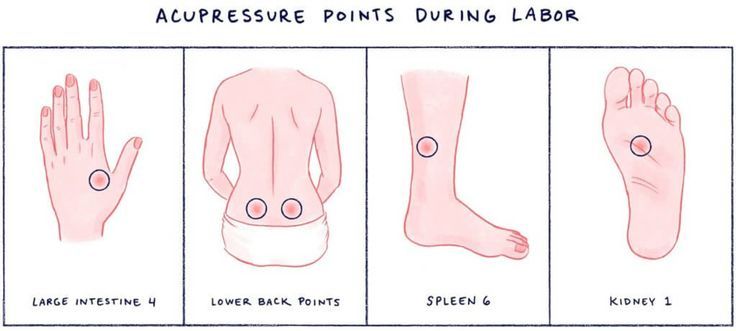Fear is one of the most powerful emotions, and it can have a significant impact on labour. When we feel anxious or afraid, our body releases stress hormones like adrenaline, which can inhibit the production of oxytocin, the hormone that triggers contractions. If you’re feeling overwhelmed or scared about the process of labour, it’s important to address these emotions early on.
Take time to talk about your fears with your partner, a friend, or a supportive professional. Breathing exercises and meditation can also be incredibly helpful in calming the mind and body. By practising relaxation techniques, you’ll not only feel more confident but also encourage your body to be in the best state to welcome labour when the time comes.
Staying active in the final weeks of pregnancy can be a great way to encourage labour naturally. Regular movement helps the baby get into the ideal position and can stimulate the muscles of the uterus, which may trigger contractions. Walking is especially beneficial because it promotes pelvic movement and helps open the pelvis, preparing your body for labour.
Try taking a gentle walk each day, focusing on breathing deeply and maintaining good posture. Walking also encourages gravity to assist the baby in descending into the birth canal, which can speed up the process when your body is ready.
Sitting on an exercise ball and gently moving your hips in circular motions can relieve pressure on your back, improve posture, and align your pelvis. This movement also helps position the baby in the right place for birth, increasing the chances of a smoother labour.
The swaying and bouncing motions on the ball can also stimulate uterine contractions, especially when combined with deep breathing and relaxation. It’s a great way to ease discomfort while encouraging your body to go into labour.
Acupressure is an ancient technique that involves applying pressure to specific points on the body to relieve discomfort and encourage physiological processes. For labour induction, you can try stimulating points such as LI4, which is located between the thumb and index finger, and SP6, just above the ankle.
By applying gentle pressure to these points, you may help stimulate contractions and encourage the onset of labour. However, it's important to note that acupressure should be used carefully, and it’s always best to consult with a practitioner who has experience in this technique.

Nipple stimulation is a natural method that can help induce labour by encouraging the release of oxytocin, the hormone responsible for uterine contractions. You can gently stimulate your nipples with your fingers or try practicing the milk expression technique (without expecting milk to come out, as it can sometimes take a while).
It’s important to do this in intervals—stimulating for about 5–10 minutes at a time, then resting. Pay attention to your body’s responses and stop if you feel any discomfort. While it can be very effective for some, nipple stimulation should be approached with caution if you have a history of fast or intense contractions.
Certain essential oils have been used for centuries to support natural labour. Oils such as clove, cinnamon, and jasmine can help stimulate uterine contractions. You can either diffuse these oils in the air, apply them to your skin (always diluted in a carrier oil), or add a few drops to a warm bath.
These oils not only promote contractions but can also help you relax and prepare your body for labour. Aromatherapy can play a wonderful role in supporting your overall emotional and physical wellbeing as you approach your birthing day.
Massaging your lower back and abdomen with almond oil can help relax your muscles and improve circulation. A gentle, soothing massage can ease tension in the body, making you feel more relaxed and comfortable as you prepare for labour.
Massages on the lower back are especially beneficial for relieving back pain, a common discomfort in late pregnancy, and they may also help stimulate the muscles in the uterus, encouraging contractions. Use gentle pressure and communicate with your partner or therapist to ensure you’re comfortable during the massage.
Raspberry leaf tea has long been touted for its ability to tone the uterus and prepare it for labour. It’s believed to help make contractions more efficient and effective, promoting the softening and opening of the cervix.
You can start drinking 1–3 cups a day in the last weeks of pregnancy. It’s important to note that while raspberry leaf tea can help stimulate the uterus, it’s not an “induction” method. Rather, it works as a supportive tool that gently prepares your body for the process of labour.
Intercourse may be the last thing on your mind as you approach the end of pregnancy, but it can actually help induce labour! Semen contains prostaglandins, hormones that help soften the cervix, and orgasm releases oxytocin, which stimulates contractions.
If you’re comfortable with it and feel up to it, having sex can be a natural and effective way to encourage your body into labour. It’s important to feel relaxed and in the mood, as stress or discomfort may make this option less effective.
Above all else, listen to your body and trust your instincts. Every labour experience is unique, and while these methods can help encourage the onset of labour, it’s important to remember that your body knows best. Labour will come when your body is ready, and each woman’s journey to motherhood is different.
If you’re trying to induce labour, be sure to stay relaxed and patient. If you ever feel unsure about any of these methods or experience any complications, don’t hesitate to contact your healthcare provider for guidance and support.
Remember that while these tips can be helpful, it’s always crucial to consult your doctor or midwife before trying any method to induce labour, especially if you have any health conditions or concerns.
Wishing you a smooth and peaceful transition into labour!


